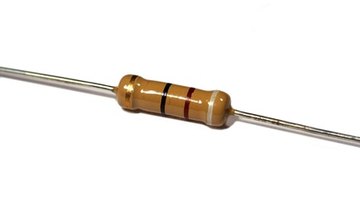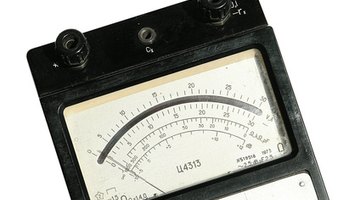How to Limit Amperage
Limiting amperage in an electrical or electronic circuit is commonly required to ensure protection of the total circuit and its components. Proper selection and installation of a current limiting device is easily accomplished if the proper tools are used, and the circuit being revised is understood. Resistors are the most common current limiting devices employed in a circuit to reduce amperage. Resistors can be either fixed or adjustable depending on the application and the circuit designer's preference. The most common circuits requiring an adjustment of amperage are built on a circuit board. Certain steps are necessary in selecting and installing a resistor in order to limit amperage of the circuit.

Step 1

Measure the voltage and current of the circuit to be modified with a multi-meter in order to determine the amperage and voltage present. Subtract the actual amperage read on the meter from the desired amperage desired to determine the size of resistor needed.
Step 2
Disconnect or unplug the circuit to be modified. If possible, completely unplug the circuit board from the power source to eliminate any chance of stray voltage or damage to the circuit while performing the resistor installation.
Step 3
Select the proper power rating and resistance value of the resistor to be used. The resistance value is expressed in "ohms" and this value can be deduced from the color bands on the resistor, as each color represents a number. A common electronics reference manual from most book stores, as well as online references, can be used to determine the size and rating of resistors based on the color bands. Unless you have extensive knowledge in electronics and math in order to calculate the ohm value of the resistor needed, you can easily experiment by trying different values of resistors and measuring the amperage to determine if more or less resistance is needed to achieve the desired result. Start with a small value of about 10 ohms.
Step 4
Cut or open the wire in the circuit between which the resistor is to be installed. If a terminal already exists on the circuit board, open the connection by removing the solder with a solder iron.
Step 5
Snip the leads from the resistor to be installed to allow a proper, flush fit on the circuit board it's to be installed on. Be careful not to cut the leads too short which will prevent a proper installation.
Step 6
Place the resistor lead ends into either end of the terminal or circuit board holes for soldering.
Step 7
Solder the leads into place with the soldering iron and solder to complete the circuit connection with the resistor now in the circuit.
Step 8
Examine the modified circuit to ensure all connections have been properly made, and there is nothing that could cause a short circuit before re-energizing.
Step 9
Plug circuit back into device or power source and recheck with multi-meter to determine if proper reduced amperage has been achieved.
Resources
- "Basic Electricity"; M. Fogiel; 2002
Writer Bio
Damon Hildebrand is a retired U.S. Navy veteran. He has more than 15 years within the oil and gas industry in both technical and managerial positions. Hildebrand has been a technical writer and communicator for the last four years. He is a certified specialists in lubrication and tribology, as well as a certified maintenance and reliability professional.
Photo Credits
- resistor image by Witold Krasowski from Fotolia.com
- multimeter image by Aleksey Bakaleev from Fotolia.com
More Articles



